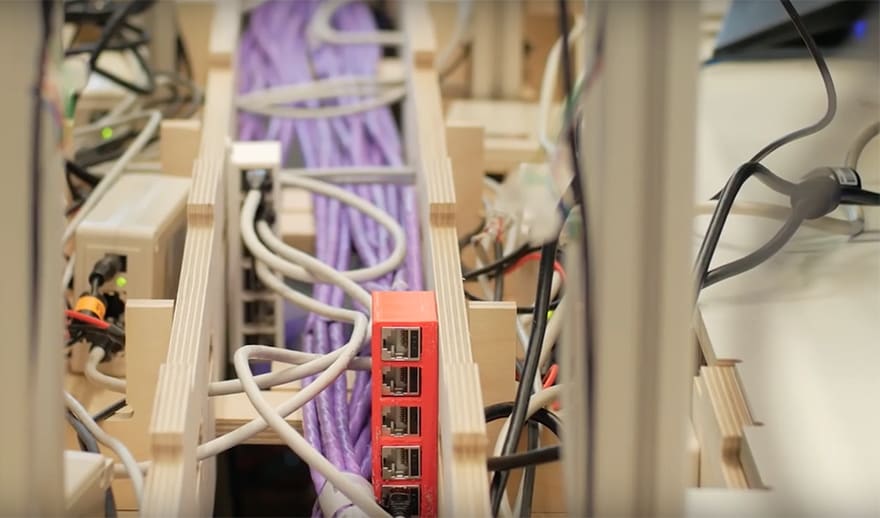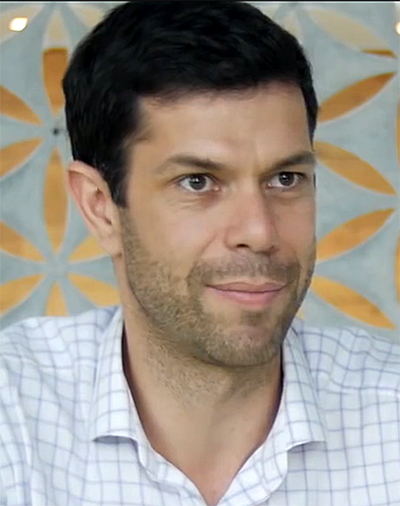Arup is about to go public on a research project it has been running for the past 18 months, intended to empower office workers to control their working environment using smartphones.
“All About the Desk” was unveiled on 25 February at the British Council of Offices’ IntelliSpace conference, and the project will be one of the innovations that Arup takes to MIPIM next month.
Although the desks are still at prototype stage, Arup is already in discussions with potential end users over the project’s next steps.
Associate mechanical engineer Michael Trousdell, one of the scheme’s originators, says: “The project began with the frustration that office dwellers feel over their inability to influence their environment, which is highlighted by the ever increasing power of smartphone.
“One of the things we think people struggle with in an office is a lack of understanding of what’s going on around them, and what a slow process it is to log a complaint about heating or lighting.
“We think the internet offers an alternative with its eco-system of standardised open protocols, when combined with low-cost mobile technology and low-cost sensors. It is possible to have a system that is really responsive at desk level.”
Heat and light
To test out its ideas, Arup built six smart desks using “smart fabrication” technology in its London office. The first step was to fit the desks with two sources of lighting: one shines upwards onto the ceiling and illuminates an area of office, and one shines downwards on each desk individually, like the passenger light in an aeroplane.
The uplight uses circadian lighting, this ensures the quality of light changes over the course of the day to mimic the colour changes of natural daylighting, and the downlight can be adjusted with a smartphone.
The second step is to give people control over the local temperature, and this was a trickier proposition. “From a heating and cooling perspective, you are limited by what has been installed, in our case, chilled beams. We are in the process of linking up an open controller, and the software we have at desk level will be able to communicate with the chilled beam above the desks, instead of having to deal with the BMS interface and all that legacy stuff.”
This function runs into the issue that two people sitting next to each other can have radically different views on whether it is too hot or cold, and the problem that if each chilled beam on a floor is set to a different temperature, they can end up “fighting each other”, as Trousdell puts it, which is not the most energy efficient way to operate.
He explains: “We expect that for the temperature control, you would have some sort of voting function, people can log whether they are too hot or cold then you might change an area. We are exploring what might happen if we allow more granular control.”
How that question is answered may have implication for the future of building services design.
“We are exploring how webcompliant technologies can open up a bit more control and better experience within the constraints imposed by the heating and cooling system. The next step, which is not in the scope of our project, yet is clearly of great interest, is how we might adjust the building services systems to take further advantage of this new approach to controls,” Trousdell says.
Smart power
As well as an enhanced ability to communicate with heating and lighting systems, the desks themselves are radically different to the standard model. The desks were designed and assembled by the Arup team using the latest smart fabrication technology, and do not need conventional AC power to run.
Instead, all the electrical equipment is run using extra low voltage DC power, supplied through PoE (Power over Ethernet). In much the same way as a single cable passes power and data between a smartphone and a computer, data cables can carry 25W of electricity to monitors and laptops. In the near future, this will be upgraded to 49W.
The advantage of using this power source is that is the extra low voltage DC power is safer and more adaptable. Photovoltaic panels and the batteries that store their electricity also use DC, and this is used by final equipment such as phones, monitors, laptops and lighting.

Data cables can carry 25W of electricity to monitors and laptops
Although these desks do not have batteries to store renewable energy, the intention is to experiment using the batteries in the laptops and phones by controlling when they are charged (demand response).
The Desk Project’s philosophy extends to its software, which uses an open source approach, allowing bespoke solutions and easy updates without the contractual limitations that are imposed with proprietary solutions.
Trousdell says: “There’s a lot of competition and tussle about how devices will be connected and big players like Apple and Microsoft will want to do things their way. This project is aligning with those people who believe in the open way of connecting that are compliant with web standards.”
Lighting is run by a piece of software called ArtNet, which is a control system developed by theatre professionals, and which is particularly well suited to real-time adjustments.
Another software component is OpenHAB, developed to automate devices in “smart homes”.
This application is looked after by the Eclipse Foundation and, according to Trousdell, it is the right sort of scale for a small area of office, although the jury is still out on whether it can be scaled up to run an entire building.
Trousdell says that the open source idea is at the heart of “All about the desk”. “Software is important. If you have a standard lighting solution, you need to pass any changes back to the supplier and they will want you to see under the hood of their software, so an engineer has to be scheduled, often weeks later to receive a brief on the changes.
“The supplier sends you a quote, and if you decide to pay the money they will spend a few weeks to implement the change so it will be months later before you have the lighting changed.
“By using software that’s open source you can still have your maintenance contract yet equally you can use people in-house because you can understand, and anyone who wants can become an expert in that software.”

We think the internet offers an alternative with its eco-system of standardised open protocols, when combined with low-cost mobile technology and low-cost sensors. It is possible to have a system that is really responsive at desk level.– Michael Trousdell, Arup













